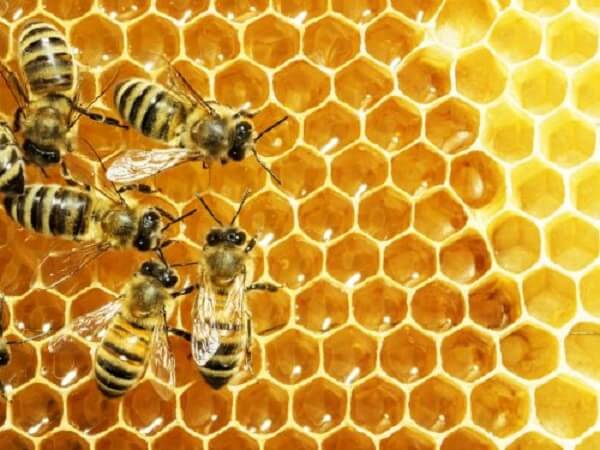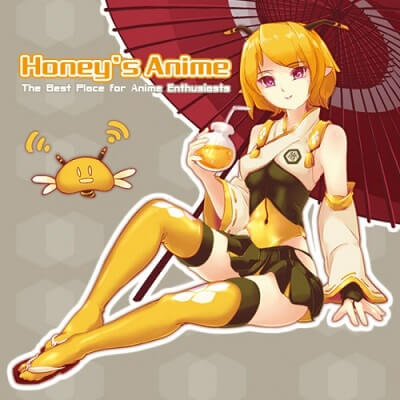Finally, the most appropriate animal for Honey’s Anime, the humble, sometimes bumble, bee, is covered. We’ll look at the history and significance of bees in Japanese culture today, as well as some of our favorite bee characters and moments from anime.
For our purposes, we’ll also be discussing related animals such as hornets, so pedants beware! Let’s get this party started!
Actual Bees in Japan
Japan is home to a diverse range of native bees, wasps, hornets, and other bee-like insects, many of which have yet to be formally classified scientifically. Many of these are also found in neighboring countries, but they frequently have subspecies that are only found in Japan.
The Japanese honey bee (apis cerana japonica) and the Asian giant hornet (vespa mandarinia, previously thought to be subspecies V. m. japonica) are the most well-known and important of these insects, having evolved unique interactions as a result of co-evolution.

Because of their size, Asian giant hornets are known as osuzumebachi, or “giant sparrow bee” in Japanese. Adults and larvae are sometimes eaten by humans in certain parts of the country, particularly in the Chubu region, and were historically important as a source of protein.
They are hunted by luring hornets with raw fish, capturing them, and tying a small piece of paper and string to their bodies as a guide to follow the hornet back to its nest, which is then excavated using smoke to disorient and pacify the hornets.
A Brief History of Japanese Beekeeping
Honey bees have long been the most economically important species for humans, as they have been in Europe and North America. Japanese honey bees (apis cerana), a subspecies of the Asian honey bee (apis cerana), have been kept for honey production since at least the 7th century, according to the Nihon Shoki, where the practice was sometimes attributed magical qualities.
Imported European honey bees, which produce much more honey, were introduced along with American apiculture techniques during the Meiji period (19th century), revolutionizing the industry in Japan, though traditional techniques are still used.
Despite the fact that Japanese honey bees produce less honey, they are less vulnerable to predators such as Asian giant hornets, which viciously attack and devour other bees, thanks to an amazing defensive technique in which the bees form a ball around the invading hornets and vibrate their flight muscles frantically to generate CO2 and heat, raising the temperature of the ball to 46 °C (115 °F), suffocating the hornet Japanese honey bees are, perhaps surprisingly, less aggressive than other varieties, rarely stinging even when directly touched. They are also more resistant to parasites and diseases, which has recently rekindled interest in them.
Bees in Modern Japanese Culture and Anime
In terms of beekeeping and honey demand, Japan currently imports the majority of its honey and relies heavily on European honey bees. Domestic production has remained stable since 2005, but new initiatives such as Tokyo’s Ginza Honey Bee Project, which involves rooftop hives on multi-story buildings, have reignited interest and sparked a slew of other urban bee projects across the country.

What about anime, though? Bees and bee characters have been well-represented in anime, though not as well as some other animals, such as our own Honey-chan and Bee-kun.
Maya from Mitsubachi Maya no Bouken (Maya the Bee), which is based on the German children’s book of the same name, and Hutch from Konchuu Monogatari Minashigo Hutch are the most notable actual bee characters, aside from Nakata Sae’s hilarious bee outfit and performance in Amagami SS (The Adventures of Hutch the Honeybee).
Both of these are older children’s shows, though Hutch made a surprising comeback in 2010 with a feature film and a 2014 short series in which he meets members of popular idol groups AKB48, SKE48, NMB48, and HKT48. Charmy the Bee made an appearance in the Sonic X anime, mostly reprising his role as a Chaotix member with his usual hyperactive and naive personality.

Other bees are more symbolically linked, such as the Tegami Bachi Letter Bees, elite mail deliverers who must fight giant insect monsters known as Gaichuu with weapons that shoot a piece of their hearts every time they use them, similar to how bees die after using their singers.
Another intriguing example is the bizarre Flame-Wreath Bee that is the focus of the Karen Bee arc of Nisemonogatari, and which afflicts Araragi Karen—who is herself symbolized by and dresses like a bee—and is prominently featured in her OP. Some characters have bee-related abilities, such as fan favorite Ponzu from Hunter x Hunter, who can summon special bees from her bee-hive-shaped hat.
Dokonjofinger’s bassist Hachin, who performed at this year’s Show By Rock!! Mashumairesh!!, recently proved that bee characters are here to stay and rock!
Also, Read Angel Adoree, Ava Michelle Cota, Kaitlin Sharkey, Melanie Olmstead
